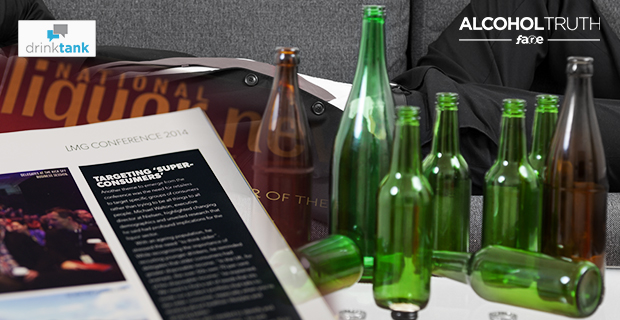Aussies enjoy a drink.
However, alcohol harms in Australia are extensive and well acknowledged. It’s a heavy burden that extends beyond the 5,500 deaths every year and the 157,000 hospitalisations.
In recent years the total alcohol we consume as a nation has fallen. Not dramatically, but fallen all the same.
Each year the alcohol industry public relations spokespeople seize on the annual per-capita data as evidence that we have become a nation of responsible moderate drinkers, perhaps in the hope that we’ll be distracted enough to forget the serious harms which are still far too prevalent and pour ourselves another drink.
But Risky Business, a new video produced by the Foundation for Alcohol Research and Education (FARE) dismantles the industry’s flawed logic, revealing that the decline in the amount of alcohol being consumed as a nation in fact masks alarming patterns of consumption in significant segments of the population.
Over 3.8 million Australians average more than four standard drinks of alcohol per day. That’s twice the recommended health guidelines.
Over 1.9 million Australians drink on average more than six standard drinkers a day, three times the amount outlined in the Australian Guidelines to Reduce Health risks from Drinking Alcohol.
Just under one million Australians consume on average more than eight stand drinks per day, equivalent to more than four times the recommended guidelines.
Even more concerning, the video also exposes the alcohol industry’s economic dependence on risky drinkers.
The 3.8 million Australians averaging more than four standards a day represent just 20 per cent of the Australian population aged 14 and over, yet this group accounts for a staggering 74.2 per cent of all the alcohol consumed nationally each year.
This is in line with the long-standing business maxim, where 20 per cent of a business’s customers generate 80 per cent of all sales. But alcohol is not like other commodities such as juice or cornflakes. Suddenly this rule of thumb sparks serious concerns when these buyer habits relate to a dangerous product, where increases in consumption are matched by increases in the risk and severity of associated harms.
This is the alcohol industry’s dirty secret. It’s an industry built on identifying, targeting and exploiting its best customers. Its profits rely on ensuring that almost 4 million Australians continue to misuse and abuse alcohol.
These four million or so drinkers are the lifeblood of the Australian alcohol industry. They’re the industry’s best customers, targeted and branded as ‘super consumers’.
But while the alcohol industry sees ‘super consumers’ and profits, health professionals see patterns of risky drinking. Drinking which leads to death and disease, neglect of children and diminished productivity.
The alcohol industry’s reliance on risky drinking is brought into sharp relief when examining the economic impact of measures to encourage super consumers to drink within the guidelines.
If this group heeded the advice to limit their drinking to two standards a day, the total alcohol consumed as a nation would be reduced by a staggering 40 per cent. That’s 39 million litres of pure alcohol.
This explains the industry’s opposition to alcohol policy measures that would push Australians to drink within the recommended guidelines.
But it does not excuse industry’s consistent and continuing efforts to block and undermine measures that would save lives and reduce alcohol-related injury and disease.
The alcohol industry will no doubt continue to employ its responsible drinking rhetoric. But this vague, undefined and unhelpful concept disguises the reality of drinking patterns in Australia and, as Risky Business shows, the industry’s dependence on the heaviest drinkers.
Governments have been complicit in all this and have too readily accepted the industry spin; those excuses and assurances that the alcohol industry supports nothing other than ‘responsible drinking’.
Public health researchers and advocates refrain from working with the alcohol industry due to irresolvable concerns regarding the alcohol industry’s commercial vested interest.
If Australia is serious about reducing alcohol harms and saving lives, then governments, politicians and policy makers must do the same and no longer allow the alcohol industry to influence alcohol policy.
If this means a very significant reshaping of Australia’s current alcohol industry, then so be it. But, as this film shows, an industry that egregiously targets and exploits four million Australians for profits has lost the right to tell governments what to do.
View the media release and research report.
Watch the Risky Business video
[vimeo id=”152113867″]








Add comment